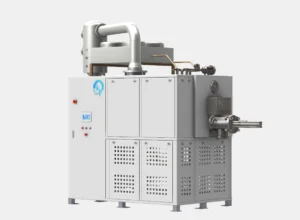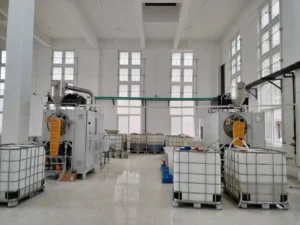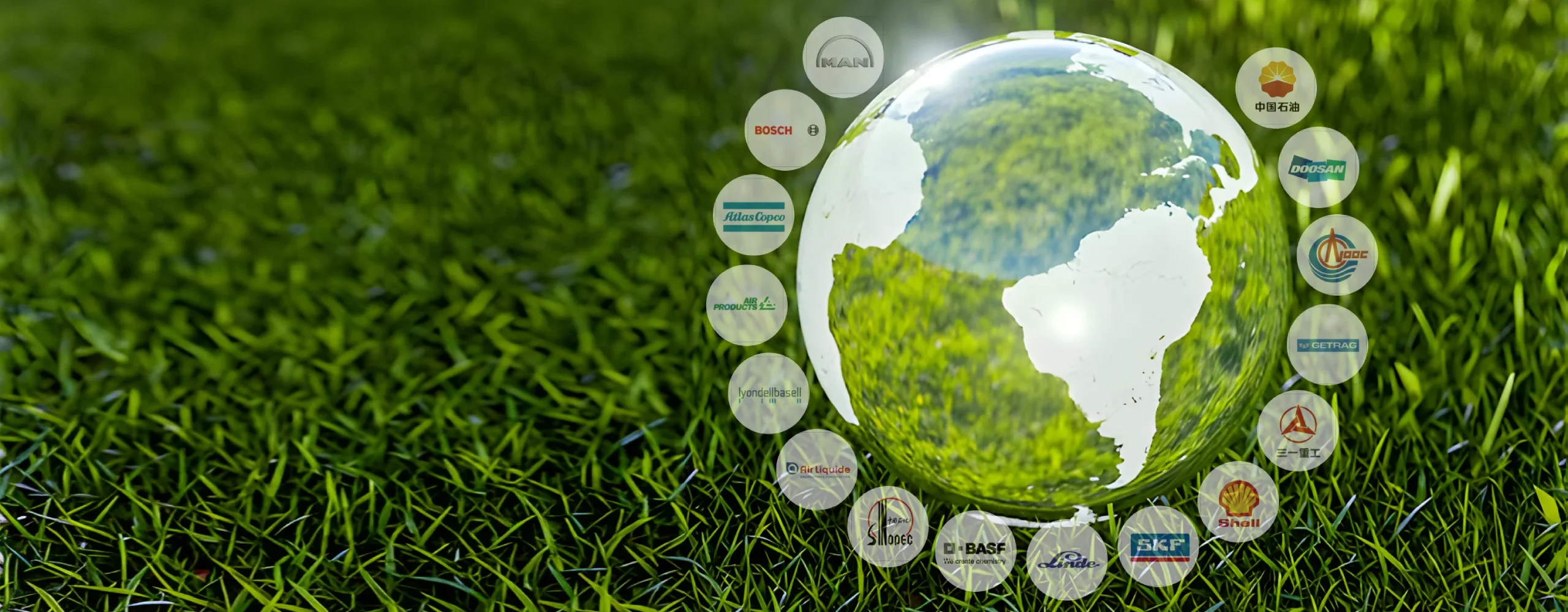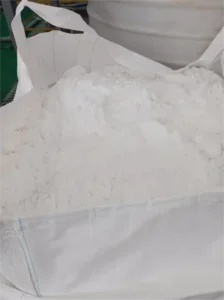China’s oil and gas resources are abundant and geographically diverse, primarily located in regions such as Sichuan, Chongqing, Shaanxi, Xinjiang, Inner Mongolia, Shandong, and Heilongjiang. Exploiting these resources typically requires hydraulic fracturing, a method that consumes vast amounts of water—over 20,000 cubic meters for a single well. The increasing focus on environmental protection has driven regulatory authorities to enforce stricter measures for wastewater treatment in oil and gas fields, especially for produced water and fracturing flowback fluids. This wastewater must now be treated to meet stringent discharge standards before being released into the environment.
The Importance of Treating Oil and Gas Field Wastewater
As the demand for energy continues to grow, efficient oil and gas extraction becomes increasingly vital. However, the process generates a significant volume of wastewater, which contains a mix of hydrocarbons, chemicals, and sediments. If not properly treated, this wastewater poses severe risks to the environment, including soil and water contamination, ecosystem disruption, and health hazards. Effective wastewater treatment is critical to ensuring the sustainable development of the oil and gas sector.

Types of Oil and Gas Field Wastewater
The primary types of wastewater generated during oil and gas production include:
· Produced water: This is water that naturally coexists with oil and gas in underground formations and is brought to the surface during extraction.
· Fracturing flowback fluid: This is the fluid that returns to the surface after hydraulic fracturing. It typically contains a mixture of water, sand, and chemical additives used during fracturing.
· Mud filter fluid: This fluid is used during the drilling process to maintain pressure and remove cuttings from the wellbore.
Each of these types of wastewater has unique characteristics and challenges that make treatment complex.
Water Quality Characteristics and Treatment Challenges
Treating oil and gas field wastewater is a highly complex process due to the composition and variability of the contaminants present. The following sections discuss some of the primary challenges and characteristics of this wastewater.
1. High Pollutant Concentration
One of the most significant challenges in oil and gas field wastewater treatment is the high concentration of pollutants. These include:
· Dirty oil and suspended solids that create murky water.
· Bacterial content, which can lead to biofouling in pipelines and equipment.
· High salinity and dissolved solids, particularly in produced water.
The Chemical Oxygen Demand (COD) value in this wastewater can range from 2,000 to 10,000 mg/L, indicating a high level of organic pollutants. If not treated, these pollutants can cause severe ecological damage.
2. High Water Hardness
Water from oil and gas fields, especially in regions like southwestern China, has extremely high hardness levels, often reaching 20,000 to 30,000 mg/L. This high hardness is primarily caused by dissolved calcium and magnesium salts, which can lead to equipment scaling and reduced efficiency in treatment systems. Conventional methods, such as the double alkali process, are expensive and often inefficient for hardness removal in such cases.
3. Low Treatment Efficiency
Traditional wastewater treatment processes struggle with the complexity of oil and gas field wastewater, often leading to low treatment efficiency. The inability to treat large quantities of produced water and fracturing flowback fluid can result in significant environmental risks, particularly when large amounts of concentrated liquid accumulate.
4. Long Process Time and Poor Stability
The stability of traditional treatment systems is another concern. Many of the current processes have lengthy and complex operations, making them vulnerable to operational disruptions. This lack of stability can compromise the overall treatment capacity, particularly when dealing with fluctuating wastewater volumes.
5. Large Equipment Footprint
Traditional wastewater treatment equipment often requires a large footprint. These systems are difficult to transport and install in remote oil and gas fields, leading to higher construction and civil engineering costs. This issue makes it impractical for many oil and gas companies to implement these solutions, especially in areas with limited infrastructure.
6. Difficulty Achieving Resource Utilization
Another significant challenge is the resource utilization of treated wastewater. Traditional methods often require large amounts of chemical reagents, which can generate additional hazardous waste. The excessive use of chemicals not only increases the treatment cost but also makes it difficult to recover valuable resources from the wastewater, such as salts or metals.

Technological Limitations in Traditional Water Treatment Methods
Many traditional water treatment technologies are limited in their effectiveness when applied to oil and gas field wastewater. Techniques such as biochemical treatment, advanced oxidation, and membrane filtration each have their drawbacks:
· Biochemical treatment: While effective for treating organic pollutants, this method has low resistance to the fluctuating quality and volume of wastewater. The system can collapse under sudden load increases, leading to process failures.
· Advanced oxidation: This method requires large quantities of chemical reagents, which can drive up costs and generate additional waste.
· Membrane filtration: Although efficient in some scenarios, membrane systems struggle to achieve zero liquid discharge (ZLD) and can be expensive to operate and maintain.
Given these limitations, there is a growing need for innovative technologies that can overcome the challenges associated with oil and gas field wastewater treatment.
Winsonda Environmental Protection’s Innovative Treatment Process
Recognizing the shortcomings of traditional methods, Winsonda Environmental Protection has pioneered a new approach to oil and gas field wastewater treatment. Their solution revolves around the use of a skid-mounted low-temperature evaporation crystallization system, which provides a more efficient, stable, and cost-effective alternative.
| Traditional Oil and Gas Field Wastewater Treatment Process | ||
| Serial Number | Type | Treatment Process |
| 1 | Fracturing Flowback Fluid | Regulation + air flotation + hardness removal + magnetic flocculation sedimentation + magnetic separation + medium filtration + ozone catalytic oxidation + sand filtration + ultra-high pressure reverse osmosis + roll reverse osmosis
Water quality regulation + air flotation oil removal + pH regulation + Fenton oxidation + barium removal reaction + calcium, magnesium and silicon removal + coagulation and flocculation + inclined tube sedimentation + pH adjustment + sand filtration + UF system + DTRO system |
| 2 | Gas Field Produced Water, Fracturing Flowback Fluid | Oil-water separation + electrocatalytic oxidation + coagulation sedimentation + fiber filtration + UF filtration + RO + MVR |
Advantages of the Skid-Mounted Low-Temperature Evaporation System
Winsonda’s technology offers several key advantages over traditional methods:
· Short process flow: The system simplifies the treatment process, reducing the number of steps and improving overall efficiency.
· High stability: The technology is resistant to fluctuations in wastewater quality and volume, ensuring consistent performance.
· Low treatment cost: By using low-temperature evaporation, the system reduces energy consumption and chemical usage, leading to lower operational costs.
· Strong anti-scaling performance: The system minimizes the formation of scale in equipment, which can prolong the lifespan of the treatment infrastructure.
· Resource-based treatment: The by-product of the process, crystallized salt, meets the standards for industrial salt and can be reused, supporting the goal of achieving resource utilization.
(Winsonda Oil and Gas Field Wastewater Slag Discharging Effect)
Process Flow and Key Components
Winsonda’s solution integrates several key components:
1. Pretreatment system: This stage removes large contaminants and prepares the wastewater for evaporation.
2. Low-temperature evaporation crystallization: The core of the system, this process evaporates water at low temperatures, leaving behind concentrated solids.
3. Back-end support system: This stage handles the final treatment and resource recovery, ensuring that the water and by-products meet regulatory standards.
The result is an average water recovery rate of over 93%, with the crystallized salt by-product conforming to industrial standards.
Future Outlook: Advancing Sustainability in Oil and Gas Fields
As environmental regulations continue to tighten, the need for innovative and efficient wastewater treatment solutions will only grow. Winsonda Environmental Protection is well-positioned to lead the charge in developing technologies that minimize the environmental impact of oil and gas production. By reducing water pollution and promoting resource utilization, the company is contributing to the broader goal of building a more sustainable and eco-friendly energy industry.
Winsonda’s commitment to innovation and environmental stewardship reflects China’s broader efforts to enhance sustainability in the oil and gas sector. With advanced technologies like the skid-mounted low-temperature evaporation crystallization system, the company is setting new standards for the treatment of oil and gas field wastewater, paving the way for a cleaner, more sustainable future.
Conclusion
The effective treatment of oil and gas field wastewater is a crucial aspect of ensuring the sustainability and environmental responsibility of the oil and gas industry. As challenges such as high pollutant concentrations, water hardness, and resource utilization persist, traditional methods are proving inadequate. However, with the emergence of innovative technologies such as Winsonda Environmental Protection’s skid-mounted low-temperature evaporation crystallization system, the industry is making strides towards more effective and sustainable solutions. By addressing both the technical and environmental challenges, these new technologies promise to enhance the efficiency and sustainability of oil and gas production, ensuring the long-term viability of these vital resources.

